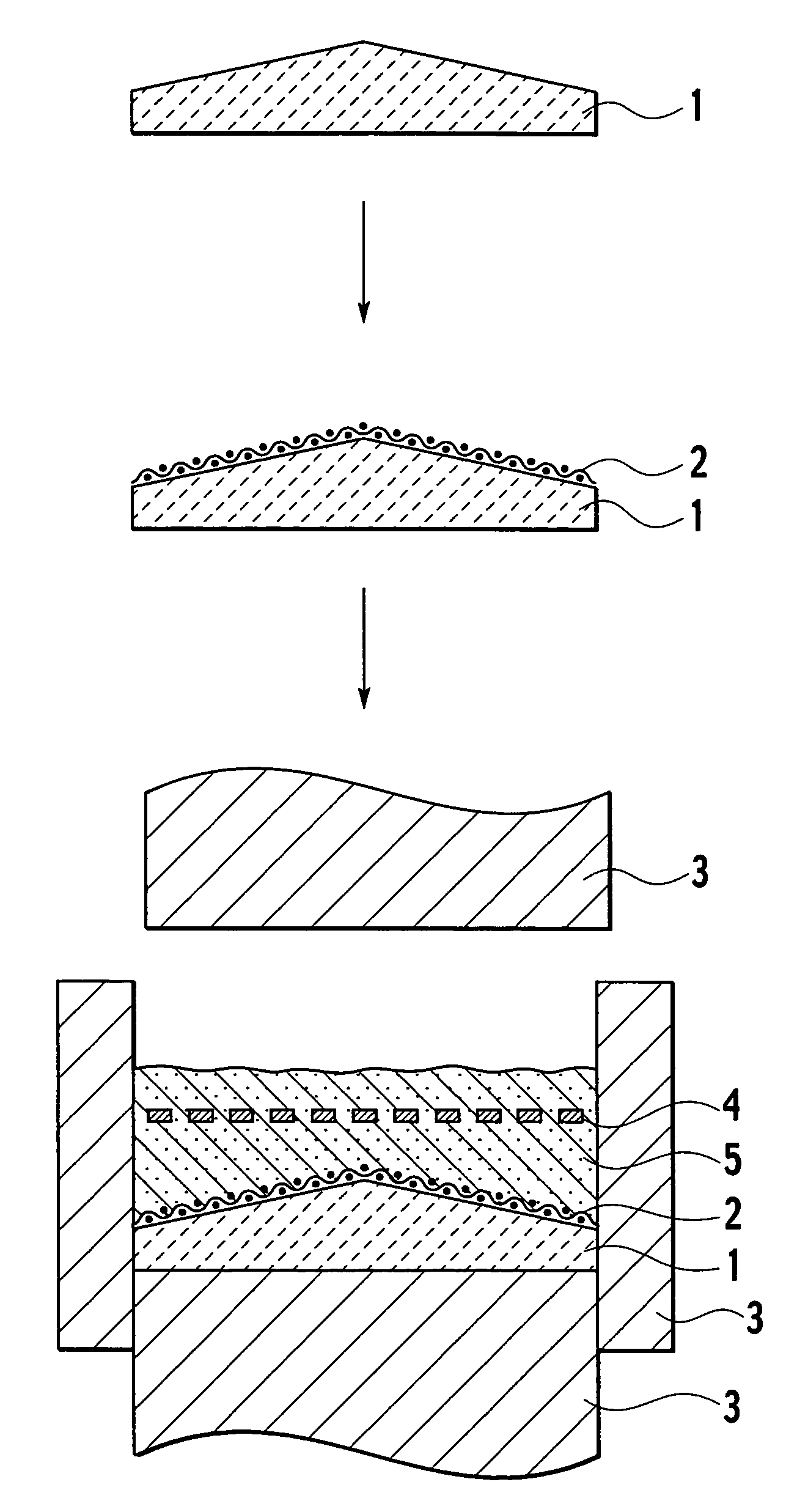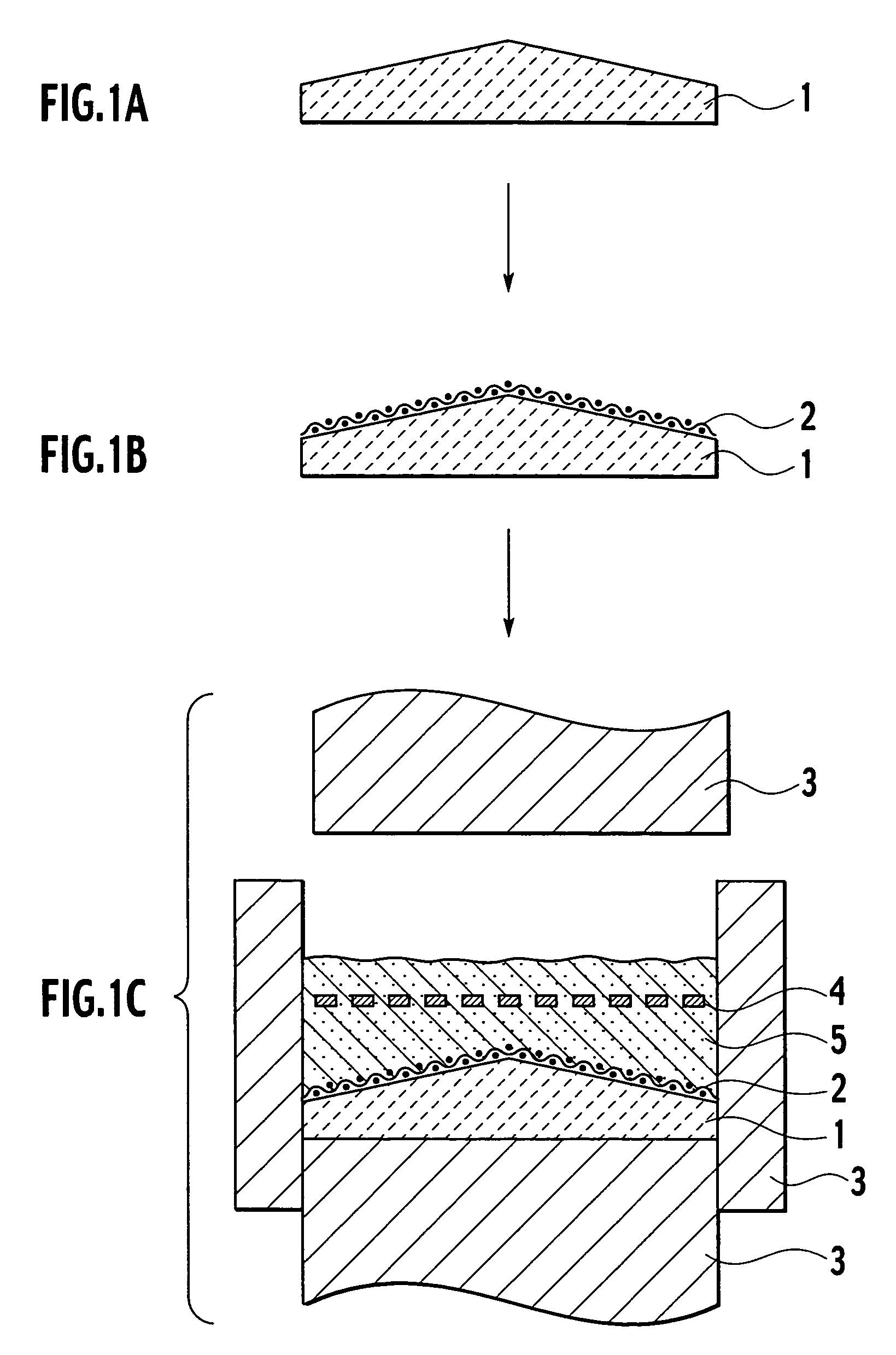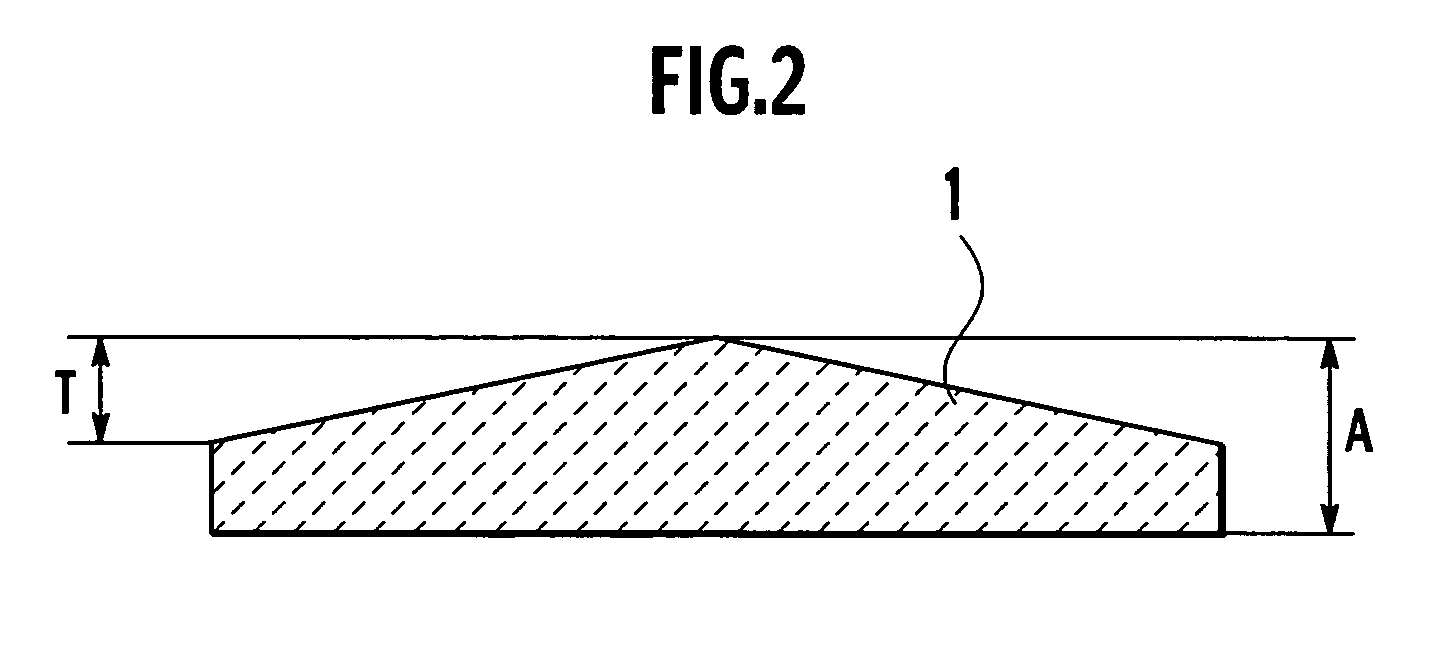Method of manufacturing electrical resistance heating element
a technology of heating element and resistance, which is applied in the field of manufacturing methods of electrical resistance heating elements, can solve the problems of particle development of conventional semiconductor manufacturing apparatuses, non-uniform generation of plasma, and shrinkage of molded form incident to densification, and achieve the effect of reducing the range of variations in applied pressur
- Summary
- Abstract
- Description
- Claims
- Application Information
AI Technical Summary
Benefits of technology
Problems solved by technology
Method used
Image
Examples
examples 1 to 6
[Making of Sintered Ceramics]
[0056]Aluminum nitride (AlN) powder containing 5% yttrium oxide (Y2O3) powder was prepared. The aluminum nitride powder containing the yttrium oxide powder was charged into a uniaxial pressing machine, and the charged powder was uniaxially pressed into a disc-shaped molded form under a pressure of 200 kg / cm2. Then, the resulting molded form was sintered into sintered ceramics having a diameter, of 340 mm and a thickness of 8 mm by hot pressing (HP) at a temperature of 1820 degrees centigrade under a pressure of 200 kg / cm2.
[0057]Then, the resulting disc-shaped sintered ceramics underwent rotary surface grinding. In rotary surface grinding, a diamond grinding wheel #200 was used as a grinding tool to grind the sintered ceramics into a disc shape or a conical shape, thereby forming six types of sintered ceramics. Incidentally, the conical shape means that the sintered ceramics are convex at the center on the surface on which the RF electrode is to be formed...
PUM
| Property | Measurement | Unit |
|---|---|---|
| thickness | aaaaa | aaaaa |
| thickness | aaaaa | aaaaa |
| temperature | aaaaa | aaaaa |
Abstract
Description
Claims
Application Information
 Login to View More
Login to View More - R&D
- Intellectual Property
- Life Sciences
- Materials
- Tech Scout
- Unparalleled Data Quality
- Higher Quality Content
- 60% Fewer Hallucinations
Browse by: Latest US Patents, China's latest patents, Technical Efficacy Thesaurus, Application Domain, Technology Topic, Popular Technical Reports.
© 2025 PatSnap. All rights reserved.Legal|Privacy policy|Modern Slavery Act Transparency Statement|Sitemap|About US| Contact US: help@patsnap.com



